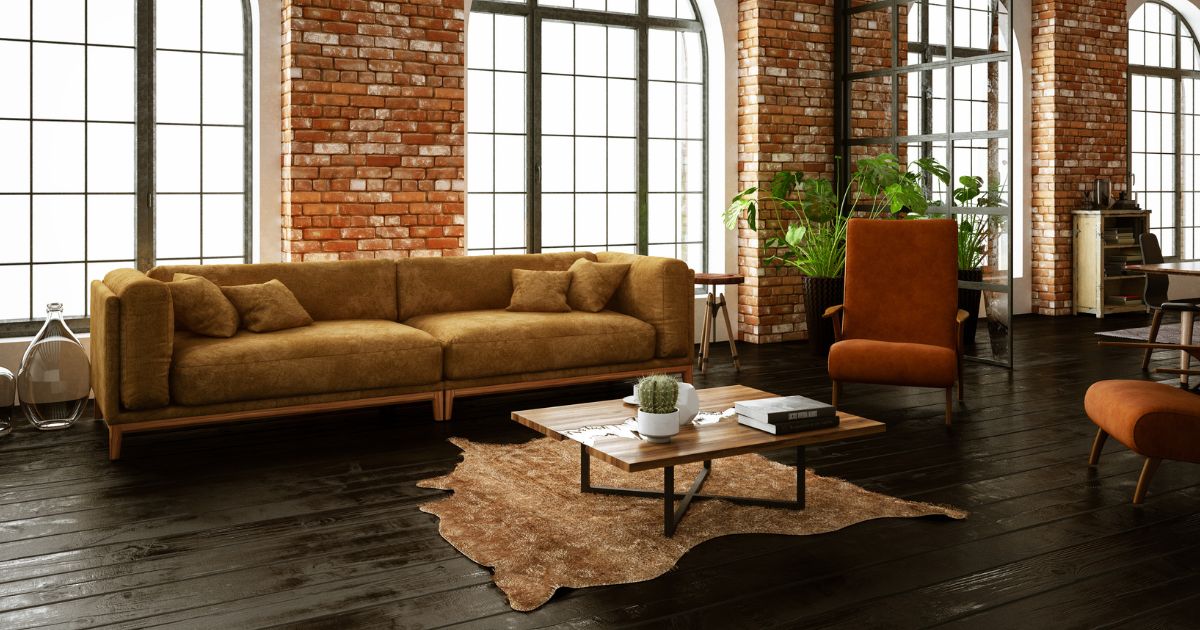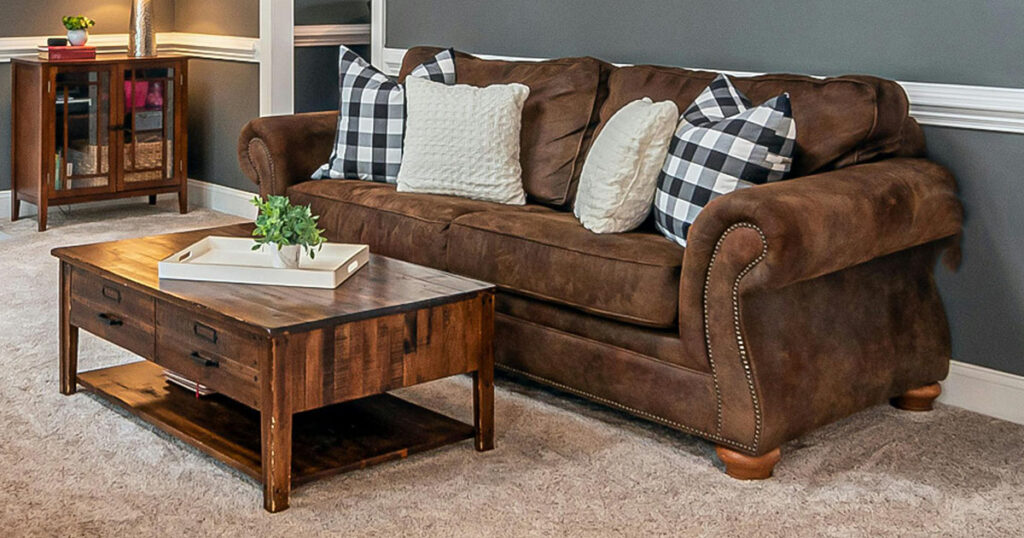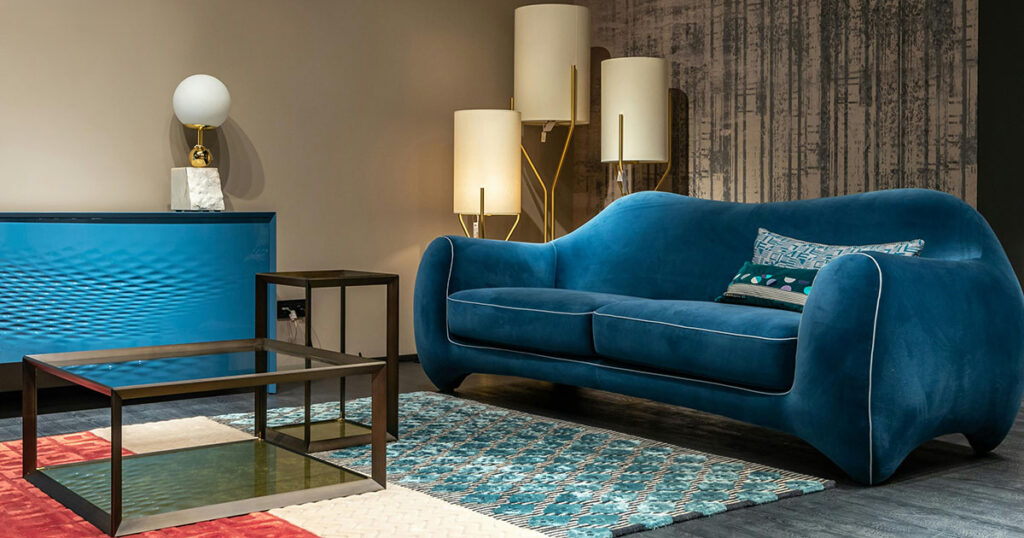Enhance your industrial-style interiors with the perfect rugs.
In this blog post, we’ll guide you on choosing rugs that complement industrial decor.
You’ll discover the best materials, colors, and patterns to elevate your space.
Learn how to balance the rugged look of industrial design with the warmth of well-chosen rugs.
Let’s get started!
Introduction
Discover how to elevate your industrial-style interior with the perfect rug.
This guide explores the crucial role rugs play in softening and defining industrial spaces, offering expert advice on materials, colors, and placement.
Whether you’re furnishing a loft apartment or a converted warehouse office, learn to choose rugs that complement and enhance your industrial aesthetic.
The Role of Rugs in Industrial Design
While industrial spaces often feature hard surfaces and raw materials, rugs play a crucial role in softening the overall aesthetic and adding warmth to the environment.
Here’s how rugs contribute to industrial-style interiors:
- Defining spaces: In open floor plans, rugs help delineate different functional areas.
- Adding texture: Rugs introduce softness and tactile interest to contrast with hard surfaces.
- Enhancing comfort: They provide a cozy underfoot feel in spaces dominated by concrete or wood floors.
- Acoustic benefits: Rugs help absorb sound, reducing echo in large, open areas.
- Visual interest: They can serve as a focal point or complement existing design elements.
Choosing the Right Materials for Industrial-Style Rugs
When selecting rugs for industrial interiors, consider materials that align with the aesthetic while offering durability and easy maintenance:
- Wool: Natural, durable, and stain-resistant. Ideal for high-traffic areas.
- Jute or sisal: Provide a raw, textured look that complements industrial spaces.
- Leather: Offers a luxurious touch while maintaining an industrial feel.
- Synthetic fibers (nylon, polypropylene): Durable and easy to clean, suitable for busy areas.
- Recycled materials: Align with the industrial ethos of repurposing and sustainability.
Color Palettes for Industrial Rugs
Industrial interiors typically feature a neutral color scheme. When choosing rug colors:
- Focus on grays, blacks, and browns as base colors.
- Consider muted blues or greens for a subtle pop of color.
- Use warm earth tones to add depth and warmth.
- Incorporate metallic accents (silver, copper, bronze) for visual interest.
- Don’t shy away from white or cream for contrast in darker spaces.
Sizes and Shapes for Industrial Spaces
Industrial spaces often have unique layouts. Consider these factors when choosing rug sizes and shapes:
- Large area rugs: Ideal for defining seating areas in open floor plans.
- Runner rugs: Perfect for long corridors or kitchen spaces.
- Irregular shapes: Can add visual interest and soften harsh lines.
- Layered rugs: Combine different sizes and textures for added depth.
- Scale appropriately: Ensure the rug size complements the room’s proportions.
Textures and Patterns that Complement Industrial Style
Texture and pattern can enhance the industrial aesthetic:
- Distressed or worn looks: Mimic the aged appearance of industrial spaces.
- Geometric patterns: Complement the clean lines of industrial furniture.
- Abstract designs: Add visual interest without overwhelming the space.
- Subtle textures: Consider low-pile rugs with slight variations in texture.
- Solid colors with interesting weaves: Provide depth without busy patterns.
Placement Strategies for Industrial Rugs
Effective rug placement can enhance the overall design:
- Living areas: Center the rug under the main seating arrangement.
- Bedrooms: Place large rugs under the bed, extending beyond the sides.
- Dining rooms: Ensure the rug is large enough to accommodate chairs when pulled out.
- Entryways: Use smaller rugs to define the entrance and protect floors.
- Work spaces: Add a rug under desk areas for comfort and style.
Sustainable and Eco-Friendly Rug Options
Sustainability aligns well with industrial design principles:
- Recycled material rugs: Made from repurposed plastics or textiles.
- Natural fiber rugs: Jute, sisal, or organic cotton options.
- Low-impact dyed rugs: Minimize chemical use in the production process.
- Locally-made rugs: Reduce transportation emissions.
- Durable, long-lasting rugs: Choose quality pieces that won’t need frequent replacement.
Mixing Rug Styles in Industrial Interiors
While maintaining an industrial aesthetic, you can mix rug styles for added interest:
- Combine vintage and modern rugs for an eclectic look.
- Mix natural fiber rugs with synthetic options in different areas.
- Use contrasting textures to create visual variety.
- Incorporate global-inspired patterns for a worldly touch.
- Balance bold statement rugs with more subdued options throughout the space.
Budget Considerations and Investment Pieces
Rugs can vary widely in price. Consider these factors when budgeting:
- Invest in high-quality rugs for main living areas.
- Choose more affordable options for less frequented spaces.
- Consider the long-term value of natural fiber rugs.
- Look for sales or vintage pieces for unique, budget-friendly options.
- Balance splurge items with more economical choices throughout the space.
Case Studies: Successful Industrial Rug Implementations
To illustrate effective use of rugs in industrial spaces, consider these examples:
- A large loft apartment using a oversized jute rug to define the living area.
- A converted warehouse office with strategically placed runner rugs in walkways.
- An industrial-style kitchen featuring a vintage, worn Persian rug for warmth.
- A minimalist bedroom softened by a plush, neutral-toned area rug.
- An artist’s studio using colorful, abstract rugs to inspire creativity within the industrial setting.
Conclusion
Selecting the right rug for your industrial-style interior doesn’t have to be daunting.
By considering factors like material, color, size, and placement, you can find pieces that perfectly balance style and functionality.
Remember, the ideal rug not only complements your space but also adds warmth, comfort, and personality to your industrial-inspired home.




